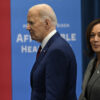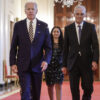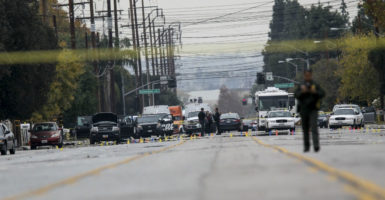Wednesday’s terrorist attack near Parliament in London—on the one-year anniversary of the Brussels airport attack—is a vivid reminder not only of the enduring nature of post-9/11 terrorism, but of how the threat continues to evolve.
Despite steady Islamist goals for high-profile attacks on Western targets and the continuing risk to airlines and other transportation modes, the norm for the near term will likely be small groups of jihadists and solo terrorists using unsophisticated weapons (including knives, machetes, and vehicles) to attack indiscriminately.
This type of threat will only grow in our homeland in 2017—not in spite of our overseas success in fighting the Islamic State, also known as ISIS, but because of it.
Although far from over, the battle to liberate Mosul from ISIS will ultimately prevail, as will the inevitable follow-on fight to free Raqqa. Understandably, many people see those goals as the end of the road for ISIS. What could possibly be next?
This mindset, however, overlooks the nature of the war that the enemy intends to fight. This discussion must look beyond the borders of Iraq and Syria toward the broader region, and to the West.
Indeed, the war today is global: No matter how protected we Americans consider ourselves, guarded by two major oceans on each coast, geography’s shield has in fact weakened in the 21st century. Walls or no walls, America remains vulnerable.
Ordinary Americans should prepare now to better confront ISIS and similarly-inspired fighters, at an amount loosely proportional to the expanding degree of our military victories overseas.
As ISIS loses territory, and as thousands of its fighters flee Mosul, Raqqa, and other sites in the coming months, many potential ISIS recruits who already live in the West will seek out targets here that are more readily available.
The most recent U.K. attack illustrates this, and although Western Europe is an easy target, the United States remains at the top of ISIS’ list of targets.
Understanding this, ordinary Americans should take three basic steps to confront the coming threat.
First, know the enemy and discuss them openly.
It’s easy to remain numb to the nebulous risk from ISIS or al-Qaeda after more than a decade and a half of conflict with Islamists, most of it being seen only on television and in lands far away.
Yet every town in America is just one news cycle away from becoming the next London, Paris, San Bernardino, or Orlando. Learn about what the enemy plans to do and how they plan to do it.
If you haven’t looked at any of their English-language online magazines, consider doing so. Much of their propaganda is indeed grisly and horrific, but some of it is useful for understanding the kind of evil we are facing, and the kind of vigilance it will take to confront it.
Consider one sobering example from ISIS’ magazine, Rumiyah:
… the blood of the disbelievers is halal, and killing them is a form of worship to Allah … This includes the businessman riding to work in a taxicab, the young adults (post-pubescent ‘children’) engaged in sports activities in the park, and the old man waiting in line to buy a sandwich. Indeed, even the blood of the [infidel] street vendor selling flowers to those passing by is halal to be shed—and striking terror into the hearts of all disbelievers is a Muslim’s duty.
Such calls to violence are indeed unnerving, but they should sober us to the threats we face. Although jihadists’ justification for the murder of civilians is not new, these texts also describe recommended tactics and other specifics worth knowing. The first step is to understand that threat, and to discuss it.
Second, when it comes to anticipating ISIS, al-Qaeda, and similar threats, think outside the box.
Don’t think of potential terrorists strictly as “military-aged males” anymore. Today they can come in all shapes, sizes, ages, and sexes.
Just two months ago, female combatants engaged Navy SEALs with automatic weapons in the well-publicized Yemen raid. Young terrorists have been observed for years, as The Washington Post also confirmed in a recent story titled “The Islamic State’s New Threat: Child Terrorists.”
ISIS’ “cubs of the Islamic State” indoctrination program is well-documented, and the list of child terrorist acts is long and growing: a knife attack on a police officer in Hannover by a 15-year-old girl in February 2016, a 16-year-old girl plotting a bomb attack who was arrested last month in France, not to mention the dozens of horrific acts committed by ISIS-led children such as the shooting and decapitating of prisoners.
According to the Combating Terrorism Center at West Point, between September 2014 and the end of 2016, there were “34 teen or pre-teen plots in seven countries [including the U.S.], with civilians most commonly targeted and knives repeatedly the weapon of choice.”
Many experts also warn that children of ISIS fighters are one of the biggest future threats.
If you doubt this claim, consider that “Jihad John,” the infamous YouTube ISIS executioner, eventually unveiled as Mohammed Emwazi and later killed, had graduated from the University of Westminster in 2009 with a computer programming degree … and was just 12 years old on Sept. 11, 2001.
Also, realize that your biggest risk might not be flying on a commercial airline flight. ISIS has excelled at finding unexpected means of inflicting harm and instilling fear.
This also means that the old “run, hide, fight” mindset is becoming obsolete. Consider the value of learning creative defense tactics that could be more useful in meeting a terror threat should it reach your street—and perhaps take a CPR class (British Member of Parliament Tobias Ellwood was the first on scene to administer aid to the stabbed London policeman on Wednesday).
Third, and finally, guard against the potential excesses of increased vigilance.
“Vigilance” and the well-known rule, “If you see something, say something,” have become clichés in our day, but they do have an important meaning.
The attempted vehicular attack in Antwerp, Belgium, this week was reportedly prevented by both civilians and police who were extra vigilant after hearing news of the U.K. attack. Heightened awareness like this on a daily basis has great potential to save lives.
Striving to become better prepared and thinking through potential terror-related scenarios is appropriate. On the other hand, paranoia, xenophobia, and hyperbolic generalizing are not.
We should live between the two extremes of blissful naiveté and paranoia. We cannot be paralyzed by political correctness and willful ignorance, but neither should we be spooked and mentally overcome by the enemy.
Americans must develop sober, informed, and determined resistance to terrorism—both to its attack form, as well as its underlying ideology.
The enemy is plotting and is always on the move. Our military and intelligence authorities are doing their part. Are we?





























